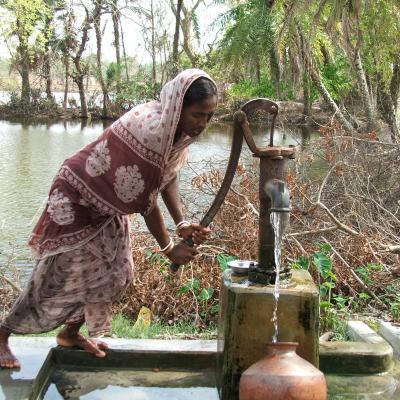How does the water cycle work?
Water molecules are heated by the sun and turn into water vapor that rises into the air through a process called evaporation. Next, the water vapor cools and forms clouds, through condensation. Over time, the clouds become heavy because those cooled water particles have turned into water droplets. When the clouds become extremely heavy with water droplets, the water falls back to earth through precipitation (rain, snow, sleet, hail, etc). The process continues in a cyclical manner.
Learn more about Earth's water cycle on the Precipitation Education website.
Freshwater seems abundant, but when accounting for all the water on Earth, it's in limited supply. Just three percent of the water on our planet is freshwater. A majority of this water, about two percent of the world total, is contained in glaciers and ice sheets or stored below ground. The remaining one percent is found in lakes, rivers and wetland areas or transported through the atmosphere in the form of water vapor, clouds and precipitation. Rain and snowfall replenish freshwater sources, making it vital to know when, where and how much water is falling at any given time. Using NASA's Global Precipitation Measurement satellite, researchers can track precipitation worldwide and monitor levels from space.
For more information, visit http://water.usgs.gov/edu/earthwherew...
This video is public domain and can be downloaded at: http://svs.gsfc.nasa.gov/goto?11619


